The Homeland Issue
Panning/Displace
Showcasing the work of Alicia Wright
“Profitable flaw of the environment an unquestionable rift between blue and green and the maps we drew of them and colored in the white space. Shifting perspective like sand, balancing on the rendered horizon that we drew together”
Panning
When one thinks of cartography (the science of drawing maps), often the first image that comes to mind is that of an ancient explorer drawing landmarks and making measurements on a drafting table in pen and paper. In reality, the tools of today’s professional cartographers are Javascript, vectors, satellite imagery, and databases. As the tools of the mapmaker have changed, the landscape artist’s tools are changing as well. How does one paint the new American landscape?
Canadian SAIC graduate Alicia Wright explores this new high-tech domain of depicting Earth’s geography. In Panning, her 2016 video art collaboration with sound artist Sam Balfus, a three-dimensional vector becomes the encryption key for unlocking geographic spaces within digital topographical surveys of the American midwest. The ‘Rotate View Tool’ in Adobe Photoshop CC becomes a symbolic compass rose for prospecting new opportunities in resource exploitation.
Displace
In Wright’s second digital image series Displace, the artist generated displacement maps from the RGB data of paintings from American landscape painter Thomas Cole’s 1836 series The Course of the Empire. In these five works, Cole, who founded the Hudson River School, depicted the rise and fall of a classical city. Wright’s transmedia translation prognostically links the state of a landscape to the state of a civilization, showing how topographical form is connected to a society’s prosperity or destruction. What begins as a noisy, jagged wilderness is sculpted into complex orthogonal architecture, which is in turn flattened in ruinous oblivion.
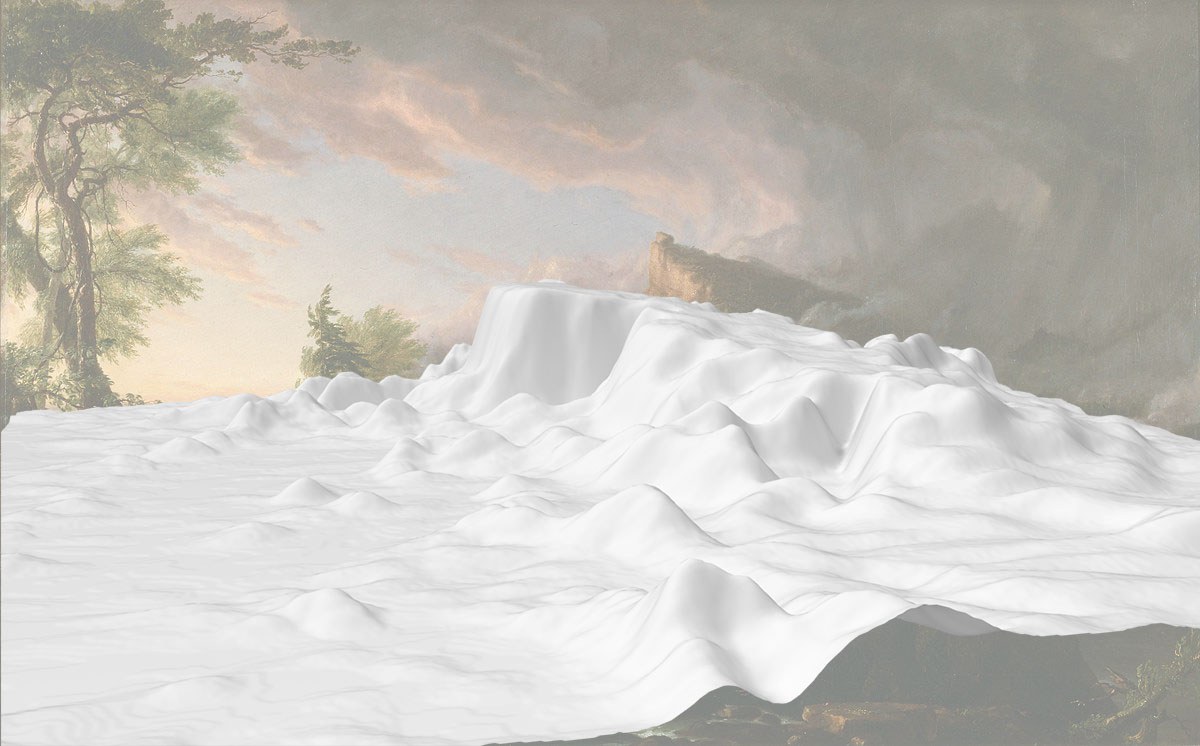
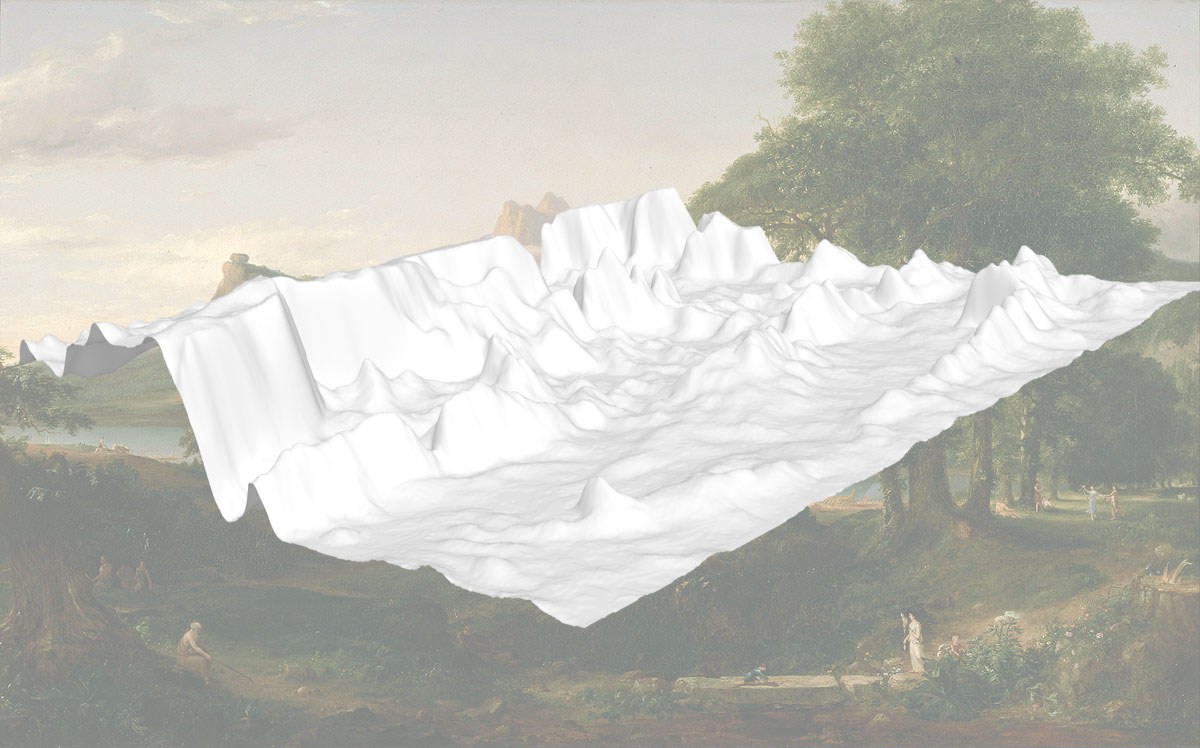
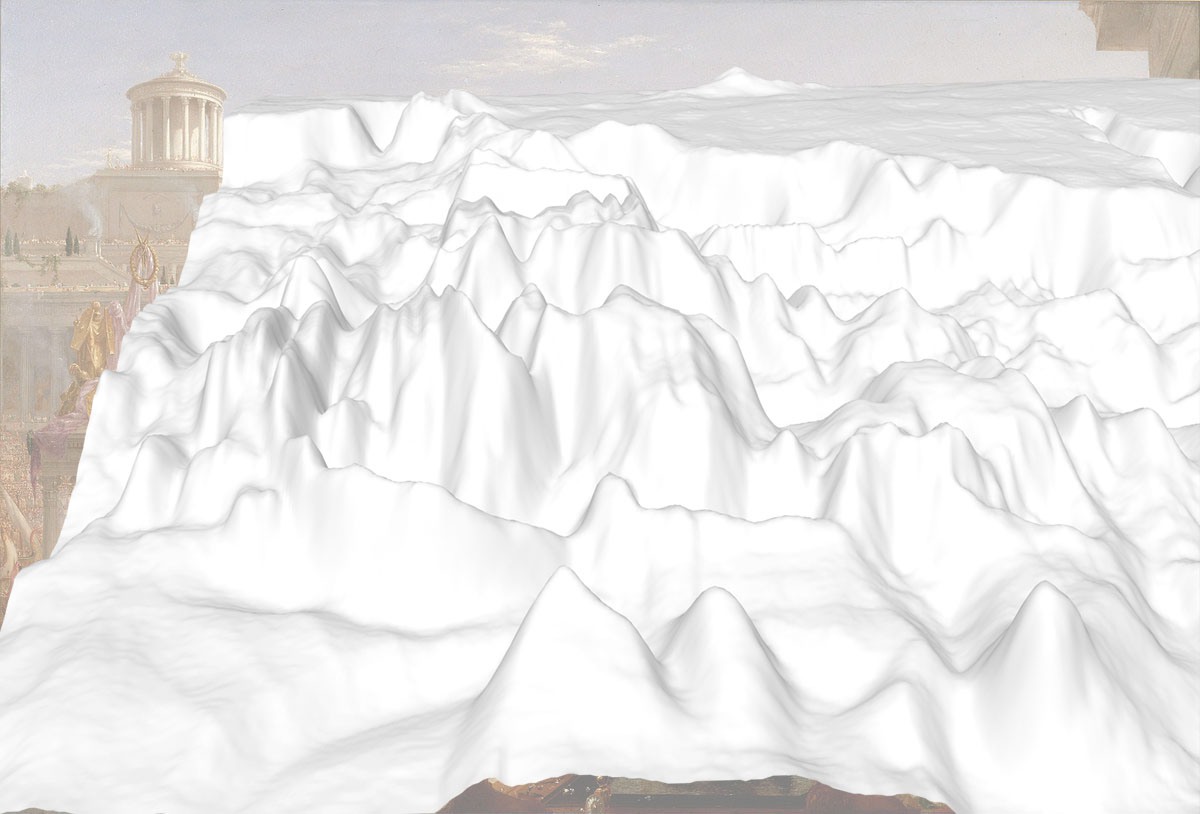
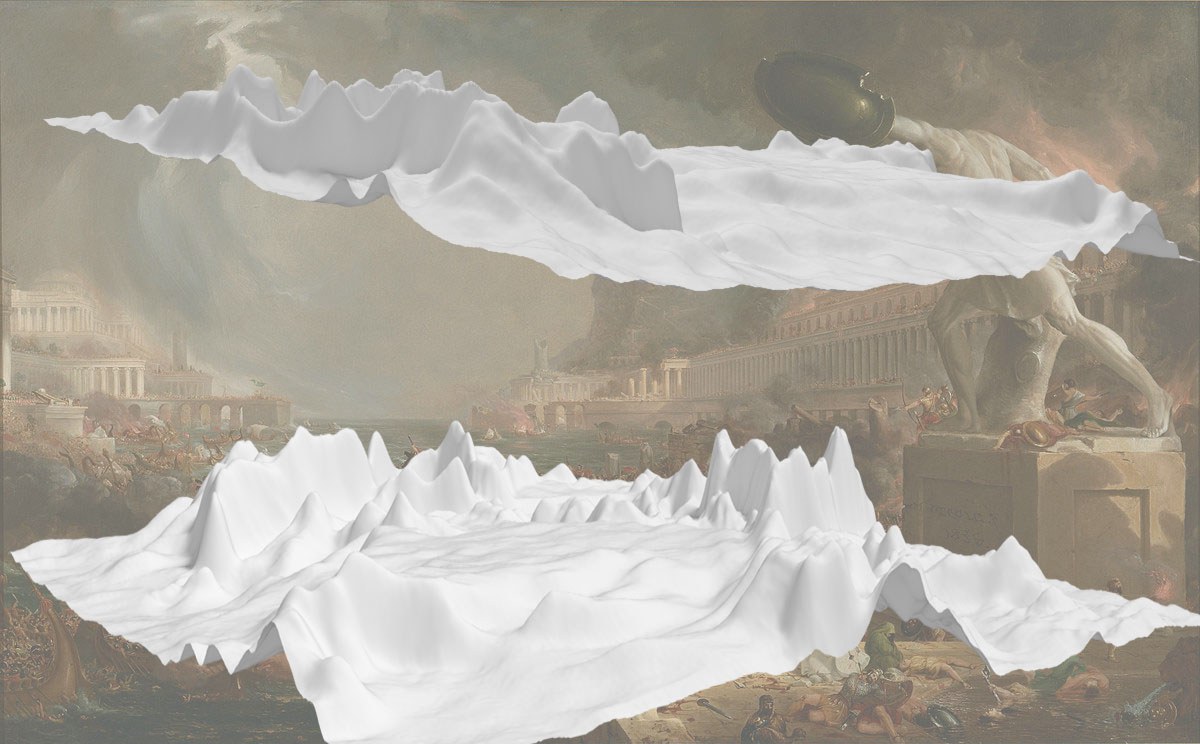
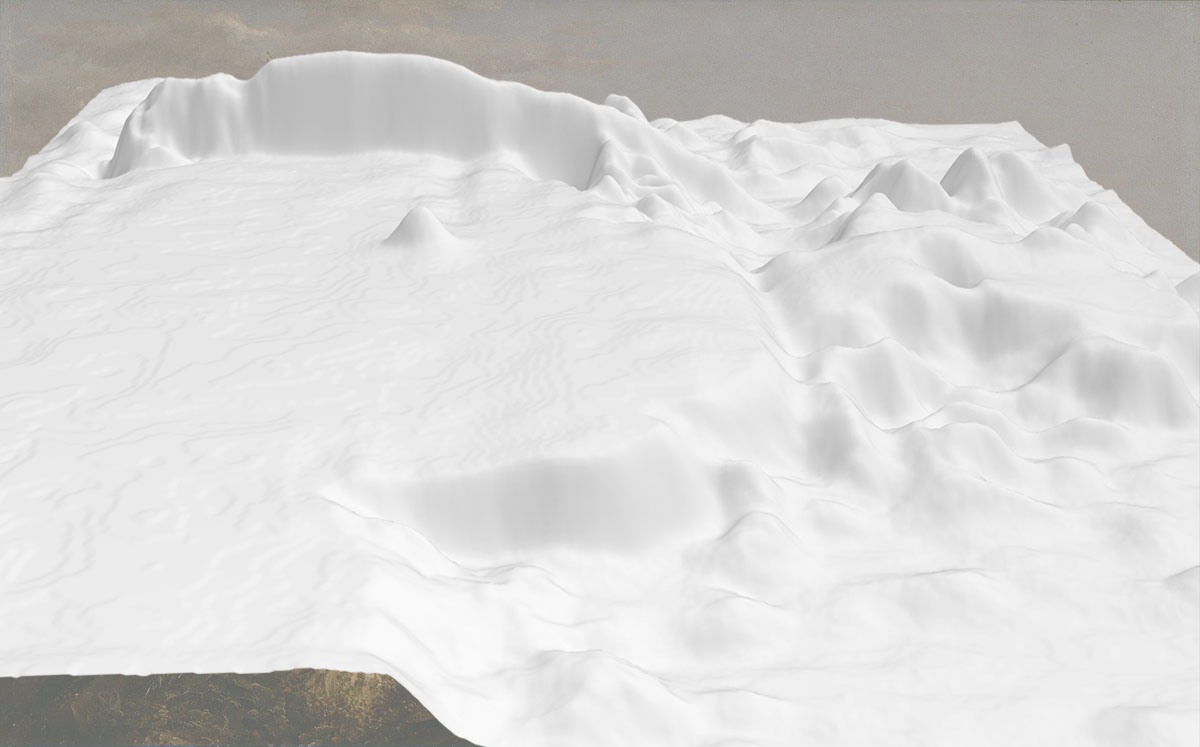
High Fidelity (Landscape Architecture Magazine)
Pre-Digital Cartography Is Still Key To ‘Mapping’ Human History (Forbes)
American Paradise: The World of the Hudson River School (Thomas J. Watson Library, The Metropolitan Museum of Art)
Alicia Wright is a Toronto-based visual artist with a BFA from the School of Art Institute of Chicago. More of her work can be found at aliciawright.net and on vimeo.